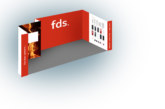The Part L grace period ends today (15th June 2023) . Here, MPA Masonry, Zutec, Plan Radar and NBS share their thoughts on Part L compliance and how the sector should adapt ahead of further tightening regulations in the future.
Tried-and-tested methods
Steve Callow, Housing Manager, MPA Masonry comments: “Part L’s grace period comes to an end today. Now legally enforceable, housebuilders and developers cannot say they’ve not had the time to introduce the measures needed to ensure compliance with a new era of low carbon and energy-efficient homes.
“The good news is that many developers are already able to meet the requirements with available build methods in masonry, at least from a fabric first perspective. Cavity wall construction offers a perfect example, especially when complemented by the latest guidance from the Future Homes Hub masonry Part L guidance, allowing developers to have no trouble achieving the required U-Values.
“The real challenge at hand will be for those using alternative build methods, with a heavier reliance on timber, glass and metals, which do not possess the same thermal qualities as concrete and brick. This means more modification of a non-traditional build method, with specialist labour requirements needed to meet the standard, resulting in reduced efficiency and greater waste.
“Sometimes, tried-and-tested methods offer the best approach. This is the case with Part L.”
Photographic evidence
Maria Hudson, CMO at Zutec says: “It’s important not to underestimate the importance of photographic evidence, now an essential criterion to achieve Part L compliance. Contractors and developers should take the necessary steps to communicate this across all site teams, regardless of whether the project is underway or due to commence. They will need to take high-quality images at every stage of the build to prove the correct protocol has been followed. Without it the asset cannot be passed by the EPC and BREL inspector and, as a result, cannot be deemed complete or occupied. Luckily with the latest digital platforms, capturing, collating, and curating the right pictures in real-time is easy to achieve and those looking to avoid the administrative headache across multiple developments should seriously consider investing in this service. After all, failure to comply will not only be extremely inconvenient, but costly to remediate. So remember to get your team camera and compliance ready’!”
Documentation and auditing
Rob Norton, UK Director at PlanRadar comments: “Without the proper quality control measures, housebuilders could face Part L failures, resulting in expensive rework that can eat into already tight profit margins.
“Given that Part L is a litmus test for the entire Future Homes Standard package, ahead of scores of other fast-approaching codes, those that haven’t already got their house in order with correct documentation and auditing must respond quickly. Easy to retrieve, relevant onsite evidence will be essential for milestone checks and as-built EPC assessments.
“Players in the housebuilding sector who mark this industry change as an opportunity to get ahead will undoubtedly be better prepared for a massive raft of building safety regulations coming into play in Autumn 2023.”
Specifiers and manufacturers
Dr Stephen Hamil, Innovation Director at NBS adds: “Now that the Part L grace period is ending, the message is clear to specifiers that they must select materials with sustainable outcomes in mind.
“This highlights the importance of the early design process — where the biggest impact can be made. It’s the perfect opportunity to choose materials that insulate, use less energy, and lower the carbon impact across the whole lifecycle of the building.
“Increased focus on carbon calculations is also likely — architects will need to demonstrate a clear focus around the primary energy use of structures to meet Building Regulations. In order to do so, accessing accurate construction product data will be critical for lower carbon decision-making.”
“The impact of Part L Building Regulations is far-reaching, particularly for manufacturers whose products have a direct impact on the energy efficiency of a building.
“Manufacturers should see the changes as an opportunity — by supplying architects and engineers with the right type of product information, they can help them achieve lower carbon outcomes that will benefit all stakeholders.
“In order to make the most of the changes, they should focus attention on accurate, structured, and digitally-supplied construction product data that gives architects everything they need in relation to environmental credentials. By doing so, the industry can ensure greater collaboration between specifiers and manufacturers and a more sustainable future for the built environment.”
Header image: ©EtiAmmos/AdobeStock









